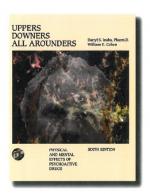|
This section contains 286 words (approx. 1 page at 300 words per page) |
Any of a group of drugs (also called psychotropic drugs) that act upon the central nervous system, producing changes in mental activity and/or behavior. Psychoactive drugs are among the most widely used group of pharmacologically active agents, with extremely important clinical applications, including anesthesia for surgery and analgesia for relief of pain. They are also used for nomedical purposes, such as to alter consciousness, improve performance, and as elements in cultural and religious rituals (alcohol and peyote are examples). Some psychoactive drugs produce an effect in those who suffer from a mental or medical disorder, but no effect on normal individuals. The antidepressants, fo example, have little or no effect on normal individuals other than side effects. Other psychoactive drugs, such as the sedative-hypnotics, produce effects in all individuals.
Psychoactive drugs are used to suppress disorders of movement and to treat anxiety disorders, depression, bipolar disorder (manic-depression), and schizophrenia, among other mental illnesses. In addition, drugs used primarily to treat disorders in peripheral organs can also affect the central nervous system (e.g., beta-blocking agents, used to treat high blood pressure or disorders of heart rhythm, or steroid hormones used to control in-flammation). The psychoactive effects of these drugs are generally considered side effects, although some are used for their psychoactive properties as well.
Culturally approved non-medical psychoactive drugs include alcohol, nicotine (tobacco), and caffeine. Psychoactive drugs that have been determined to have a high potential for harm and little medical benefit include heroin, hallucinogens, and some older sedative-hypnotics such as methaqualone. Marijuana has traditionally been placed in this category, but recent research has demonstrated potential effectiveness for medical problems including glaucoma, nausea, and weight loss associated with cancer or AIDS.
|
This section contains 286 words (approx. 1 page at 300 words per page) |


